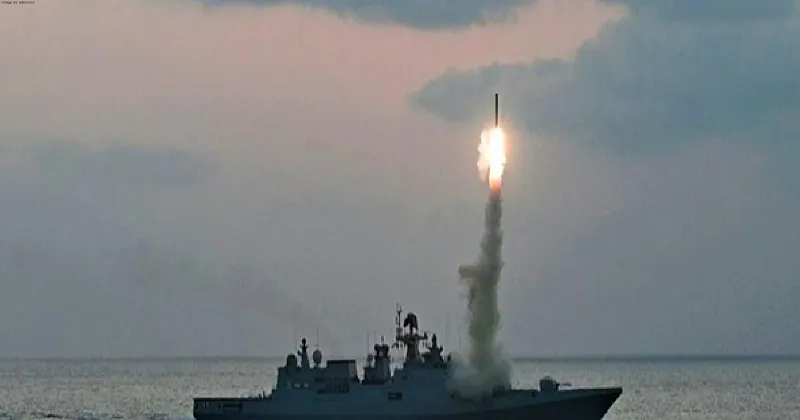Indian Navy Demonstrates Combat Readiness
Indian Navy Conducts Successful Anti-Ship Firings
Context: In a powerful display of maritime strength, the Indian Navy has conducted multiple successful anti-ship missile firings in the Arabian Sea, showcasing its long-range precision strike capabilities amid escalating tensions with Pakistan following the Pahalgam terror attack.

More on News
- Kolkata-class destroyers, Nilgiri-class, and Krivak-class frigates participated in the operations.
- INS Vikrant, India’s indigenous aircraft carrier, and P-8I maritime patrol aircraft remain strategically deployed.
- The Navy’s latest indigenous guided missile destroyer, INS Surat, successfully test-fired a Medium-Range Surface-to-Air Missile (MRSAM) in the Arabian Sea.
INS Vikrant: India’s Indigenous Aircraft Carrier
INS Vikrant is the Indian Navy’s first indigenously built aircraft carrier and a symbol of India’s growing maritime power. It is currently one of the two active aircraft carriers in the Indian Navy, alongside INS Vikramaditya.
Key Features and Specifications:
- Displacement: 40,000–45,000 tonnes (varies by source and configuration)
- Length: 262–262.5 meters
- Beam (Width): 59–62 meters
- Speed: Maximum 28–30 knots (52–56 km/h)
- Range: 7,500–8,600 nautical miles (13,900–15,000 km)
- Crew: Approximately 1,700 (including 196 officers)
- Aircraft Capacity: Up to 40 aircraft, including MiG-29K fighter jets and Kamov Ka-31 helicopters
- Armament:
-
- 64 Barak surface-to-air missiles (Barak 1 and Barak 8)
- Otobreda 76 mm guns
- AK-630 close-in weapon systems (CIWS)
- Capable of carrying BrahMos missiles
- Propulsion: Powered by General Electric turbines, generating 110,000 horsepower
- Flight Deck: 12,500 m²
- Hospital Complex: Onboard medical facilities
Construction and Commissioning:
- Builder: Cochin Shipyard Limited (CSL), Kerala, India
- Construction Started: 2009 (keel laid)
- Launched: 12 August 2013
- Commissioned: 2 September 2022
- Development Cost: Approx. ₹23,000 crore (US$3 billion in 2023)
Rising India-Pakistan Tensions
- The military drills come amid heightened tensions following the April 22 terror attack in Pahalgam, Kashmir, where 26 civilians, mostly tourists, were killed.
- India has vowed strong retaliation, leading to intensified security operations in the region.
Recent Developments
- Ceasefire violations along the Line of Control (LoC) have increased, with Pakistan reportedly initiating multiple breaches.
- The Indian Army has effectively retaliated, with no casualties reported on the Indian side.
Strategic Implications
- The Indian Navy’s missile firings serve as a clear deterrent message, reinforcing India’s offensive and defensive maritime capabilities.
- With Pakistan issuing prior notifications for the drills, the operations highlight India’s preparedness for any escalation.
Why This Matters
- Strengthens India’s naval dominance in the Arabian Sea.
- Sends a strong signal to adversaries amid ongoing security threats.
- Showcases indigenous defense advancements, including INS Vikrant and INS Surat.
Subscribe to our Youtube Channel for more Valuable Content – TheStudyias
Download the App to Subscribe to our Courses – Thestudyias
The Source’s Authority and Ownership of the Article is Claimed By THE STUDY IAS BY MANIKANT SINGH


